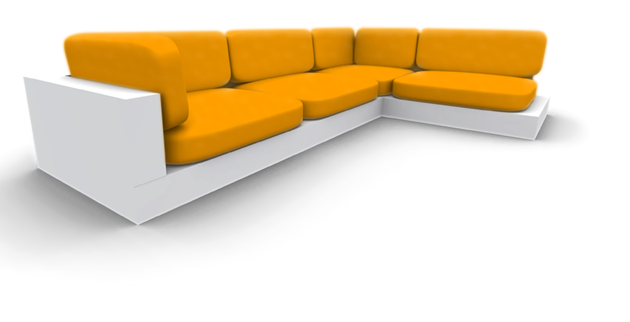| Autor |
Beitrag |
Hacker1
Hält's aus hier
Beiträge: 6
|
Verfasst: Di 16.05.06 11:37
Hallo Leute
Ich bräuchte Hilfe in meinem Ampelprojekt in Delphi ich komme nicht weiter ich weis nicht wie ich anfangen soll
meine schritte:
1.Anfangsposition: jede Ampel ist aus
2.Autoampel ist grün
Fußgängerampel ist rot
3.Ampel springt auf orange kurz danach auf rot
4.Fußgängerampel wird grün
5.Fußgängerampel wird rot
6.Autoampel wird gelb danach auf grün
Dies soll mit der while schleifen funktion passieren habe echt kein plan ich hoffe ich könnt mir helfen
mfg
hacker1
|
|
starsurfer
       
Beiträge: 334
Win 95, Win 98, Win XP, Win Vista, Linux
D5 Enterprise ,D2005, D6 Personal, Visual C++ Express 2005, C++ Builder 6 E, Dev-C++
|
Verfasst: Di 16.05.06 12:31
also:
ich hab keine Ahnung wie du das mit 'while' machen willst, zumal selbst wenns ginge wäre das so schnell das das fürs Auge nicht sichbar wäre UND du würdest den Comp auch noch in ne Endlosschleife schicken....
ich würds so machen:
Was brauch ich für Komponenten?
5x TShape //für die ampellichter
1x TTimer //zumsteuern der abläufe
1x Button // zum an und aus schalten
Was brauch ich an Variablen?
StatusAutoAmpel:array[0..2] of bool;//speichert den wert der Ampel - 3te Stelle:rot, 2te Stelle:gelb, 1te Stelle:Grün - true = an, false =aus
StatusFussgaengerAmpel:integer;//speichert den Wert der Ampel - 2Rot, 1:Grün
Wann leuchtet welches Licht?
  Quelltext Quelltext
1:
2:
3:
4:
5:
6:
7:
8:
| Auto |Fußgänger
-----------------------
Rot Gelb Grün| Rot Grün
aus aus an | an aus
aus an aus | an aus
an aus aus | aus an
an an aus | an aus
aus aus an | an aus |
Daraus muss ich jetzt ermitteln welches licht wann an ist,
zB. Fügänger haben nur Grün wenn
  Quelltext Quelltext
1:
| Autoampel Rot AN ist UND Autoampel Gelb AUS |
um keinen Status am anfang zu haben setzt du beim Formcreate einfach alles auf False bzw auf 0 ( auch den Timer ausschalten)
mit den klick auf dem Button startest du den Ampel Vorgang
die "Formeln" für jedes Licht setzt du jetzt im Timer Ereignis um.
  Delphi-Quelltext Delphi-Quelltext
1:
2:
3:
4:
| procedure TForm1.Timer1Timer(Sender: TObject);
begin
end; |
und setzt die Werte halt wie sie sein müssen.
Bsp:
  Delphi-Quelltext Delphi-Quelltext
1:
2:
3:
4:
| if (StatusAutoAmpel[2]=true) and (StatusAutoAmpel[1]=false) then begin
fussgaengerAmpel:=1; end; |
hast du die Formeln umgesetzt muss du die TShaps noch nach Status sichtbar bzw unsichtbar machen...
star _________________ GEIZ IST GEIL! - Ihr Sozialamt
|
|
DaKirsche
       
Beiträge: 187
Win XP Pro, SuSe Linux 7.3 - 10.2, Win 2k3 Server, Win 2000, Win NT 4.0
Delphi 2006 Pro, Java, HTML, SQL, PHP, CSS
|
Verfasst: Di 16.05.06 13:05
@starsurfer : wozu gibt es sleep(); ?? Damit wird es langsamer. Dann Application.Processmessages, damit die Änderung angezeigt wird und Klicks abgefragt werden und eine Boolsche Variable zum Beenden der Schleife.
Also ich habe es zwar etwas umständlich gelöst, aber zumindest mit While-Schleife...
Er wiederholt den Vorgang der kompletten Ampelphasen solange, bis der Stop-Button geklickt wurde....
1:
2:
3:
4:
5:
6:
7:
8:
9:
10:
11:
12:
13:
14:
15:
16:
17:
18:
19:
20:
21:
22:
23:
24:
25:
26:
27:
28:
29:
30:
31:
32:
33:
34:
35:
36:
37:
38:
39:
40:
41:
42:
43:
44:
45:
46:
47:
48:
49:
50:
51:
52:
53:
54:
55:
56:
57:
58:
59:
60:
61:
62:
63:
64:
65:
66:
67:
68:
69:
70:
71:
72:
73:
74:
75:
76:
77:
78:
79:
80:
81:
82:
83:
84:
85:
86:
87:
88:
89:
90:
91:
| procedure FormCreate(Sender: TObject); procedure StartAmpelSimulationClick(Sender: TObject); procedure SetStartWerte();
procedure ColorizeAll();
procedure ColorizeSingle(AmpelLicht: TShape; Farbe : TColor);
procedure BeendeSimulationClick(Sender: TObject); private
public
end;
var
Form1: TForm1;
stop : boolean;
implementation
{$R *.dfm}
procedure TForm1.SetStartWerte();
begin
stop := false;
ColorizeAll();
ColorizeSingle(Shape1, clRed);
ColorizeSingle(Shape5, clLime);
end;
procedure TForm1.ColorizeAll();
begin
ColorizeSingle(Shape1, clSilver);
ColorizeSingle(Shape2, clSilver);
ColorizeSingle(Shape3, clSilver);
ColorizeSingle(Shape4, clSilver);
ColorizeSingle(Shape5, clSilver);
end;
procedure TForm1.ColorizeSingle(AmpelLicht: TShape; Farbe : TColor);
begin
AmpelLicht.Brush.Color := Farbe;
Application.Processmessages; end;
procedure TForm1.FormCreate(Sender: TObject);
begin
Shape1.Brush.Color := clsilver;
Shape2.Brush.Color := clsilver;
Shape3.Brush.Color := clsilver;
Shape4.Brush.Color := clsilver;
Shape5.Brush.Color := clsilver;
end;
procedure TForm1.StartAmpelSimulationClick(Sender: TObject);
begin
SetStartWerte();
while (not stop) do begin
sleep(1000); ColorizeAll();
ColorizeSingle(Shape4, clYellow);
ColorizeSingle(Shape1, clRed);
sleep(1000); ColorizeAll();
ColorizeSingle(Shape3, clRed);
ColorizeSingle(Shape1, clRed);
sleep(1000); ColorizeAll();
ColorizeSingle(Shape3, clRed);
ColorizeSingle(Shape2, clLime);
sleep(1000); ColorizeAll();
ColorizeSingle(Shape1, clRed);
ColorizeSingle(Shape3, clRed);
sleep(1000); ColorizeAll();
ColorizeSingle(Shape1, clRed);
ColorizeSingle(Shape4, clYellow);
sleep(1000); ColorizeAll();
ColorizeSingle(Shape1, clRed);
ColorizeSingle(Shape5, clLime);
sleep(1000); end;
ColorizeAll(); end;
procedure TForm1.BeendeSimulationClick(Sender: TObject);
begin
stop := true;
end; |
|
|
chriss1988
       
Beiträge: 389
windows xp prof,home,windows98
delphi5
|
Verfasst: Di 16.05.06 13:12
und was bedeutet bei dir die einzelnen prozeduren?
  Delphi-Quelltext Delphi-Quelltext
1:
2:
3:
| procedure ColorizeAll();
procedure SetStartWerte();
procedure ColorizeSingle(AmpelLicht: TShape; Farbe : TColor); |
|
|
LLCoolDave
       
Beiträge: 212
Win XP
Delphi 2005
|
Verfasst: Di 16.05.06 13:16
DaKirsche: Ich würde trotzdem von sleep abraten, da reagiert das Programm gar nicht mehr. Sinnvoller wäre es bis zum verstreichen einer bestimmten immer wieder die neu ankommenden Nachrichten zu verarbeiten, dann reagiert das Programm auch weiterhin, auch wenn die Prozedur solange Pause macht:
  Delphi-Quelltext Delphi-Quelltext
1:
2:
3:
4:
5:
6:
| var
lasttickcount: cardinal;
lasttickcount := GetTickCount;
while lasttickcount + 100 < GetTickCount do
Application.ProcessMessages; |
Da bleibt die Prozedur auch 100ms stehen, aber man kann in der zwischenzeit das Programm trotzdem verschieben, Beenden, Buttons klicken etc.
Sleep ist wie das Bremsen eines Autos mit einem Anker. Es funktioniert zweifelsohne, hat jedoch nicht immer den gewünschten Effekt (es wird wohl entweder die Ankerkette oder ein Teil Karosserie nachgeben), und erscheint bei näherer Betrachtung doch eher unbrauchbar wegen anderer Alternativen.
|
|
DaKirsche
       
Beiträge: 187
Win XP Pro, SuSe Linux 7.3 - 10.2, Win 2k3 Server, Win 2000, Win NT 4.0
Delphi 2006 Pro, Java, HTML, SQL, PHP, CSS
|
Verfasst: Di 16.05.06 13:32
Mit ColorizeAll(); werden alle AmpelLichter auf grau gesetzt.
ColorizeSingle kann man mit den Werten der Shapebezeichnung und eines Farbwertes ein bestimmtes Licht färben (zum "leuchten bringen").
SetStartWerte(); macht quasi beides und setzt damit die Anfangswerte (FAmpel rot AAmel grün).
Nagut, aber wenns so sein soll kann ich es auch insofern übertreiben und sleep(1); 1000mal in einer Schleife wiederholen lassen, dann wird alle 1ms die eingabe abgefragt....
|
|
chriss1988
       
Beiträge: 389
windows xp prof,home,windows98
delphi5
|
Verfasst: Di 16.05.06 13:36
jo sorry war mein fehler habs zuspät erkannt
@ DaKirsche
dein code hatte ein paar fehler(die ampel war falsch)
und das mit dem stop geht auch nicht
also hier nochmal der code richtig sosollte die ampel laufen
1:
2:
3:
4:
5:
6:
7:
8:
9:
10:
11:
12:
13:
14:
15:
16:
17:
18:
19:
20:
21:
22:
23:
24:
25:
26:
27:
28:
29:
30:
31:
32:
33:
34:
35:
36:
37:
38:
39:
40:
41:
42:
43:
44:
45:
46:
47:
48:
49:
50:
51:
52:
53:
54:
55:
56:
57:
58:
59:
60:
61:
62:
63:
64:
65:
66:
67:
68:
69:
70:
71:
72:
73:
74:
75:
76:
77:
78:
79:
80:
81:
82:
83:
84:
85:
86:
87:
88:
89:
90:
91:
92:
93:
94:
95:
96:
97:
98:
99:
100:
101:
102:
103:
104:
105:
106:
107:
108:
109:
110:
111:
112:
113:
114:
115:
116:
117:
118:
119:
120:
121:
122:
123:
124:
125:
126:
127:
128:
129:
130:
131:
| unit Unit1;
interface
uses
Windows, Messages, SysUtils, Classes, Graphics, Controls, Forms, Dialogs,
ExtCtrls, StdCtrls, Buttons;
type
TForm1 = class(TForm)
Shape1: TShape;
Shape2: TShape;
Shape3: TShape;
Shape4: TShape;
Shape5: TShape;
StartAmpelSimulation: TButton;
timer1: TTimer;
BeendeSimulation: TButton;
procedure FormCreate(Sender: TObject); procedure StartAmpelSimulationClick(Sender: TObject); procedure SetStartWerte();
procedure ColorizeAll();
procedure ColorizeSingle(AmpelLicht: TShape; Farbe : TColor);
procedure BeendeSimulationClick(Sender: TObject); private
public
end;
var
Form1: TForm1;
stop : boolean;
implementation
{$R *.dfm}
procedure TForm1.SetStartWerte();
begin
stop := false;
ColorizeAll();
ColorizeSingle(Shape1, clRed);
ColorizeSingle(Shape4, clred);
end;
procedure TForm1.ColorizeAll();
begin
ColorizeSingle(Shape1, clSilver);
ColorizeSingle(Shape2, clSilver);
ColorizeSingle(Shape3, clSilver);
ColorizeSingle(Shape4, clSilver);
ColorizeSingle(Shape5, clSilver);
end;
procedure TForm1.ColorizeSingle(AmpelLicht: TShape; Farbe : TColor);
begin
AmpelLicht.Brush.Color := Farbe;
Application.Processmessages; end;
procedure TForm1.FormCreate(Sender: TObject);
begin
Shape1.Brush.Color := clsilver;
Shape2.Brush.Color := clsilver;
Shape3.Brush.Color := clsilver;
Shape4.Brush.Color := clsilver;
Shape5.Brush.Color := clsilver;
end;
procedure TForm1.StartAmpelSimulationClick(Sender: TObject);
begin
SetStartWerte();
while (not stop) do begin
sleep(1000); ColorizeAll();
ColorizeSingle(Shape1, clred);
ColorizeSingle(Shape5, clGreen);
sleep(1000); ColorizeAll();
ColorizeSingle(Shape4, clRed);
ColorizeSingle(Shape1, clRed);
sleep(1000); ColorizeAll();
ColorizeSingle(Shape1, clred);
ColorizeSingle(Shape2, clyellow);
ColorizeSingle(Shape4, clRed);
sleep(1000); ColorizeAll();
ColorizeSingle(Shape3, clGreen);
ColorizeSingle(Shape4, clRed);
sleep(2000); ColorizeAll();
ColorizeSingle(Shape2, clYellow);
ColorizeSingle(Shape4, clRed);
sleep(1000); ColorizeAll();
ColorizeSingle(Shape2, clYellow);
ColorizeSingle(Shape1, clRed);
ColorizeSingle(Shape4, clRed);
end;
end;
procedure TForm1.BeendeSimulationClick(Sender: TObject);
begin
stop := true;
end;
end. |
|
|
DaKirsche
       
Beiträge: 187
Win XP Pro, SuSe Linux 7.3 - 10.2, Win 2k3 Server, Win 2000, Win NT 4.0
Delphi 2006 Pro, Java, HTML, SQL, PHP, CSS
|
Verfasst: Di 16.05.06 13:48
nagut, das Einzige, was du jetzt verändert hast ist, dass teilweise 3 Lampen leuchten.....sonst sehe ich nix, was du geändert hast....aber ok....^^
|
|
Jetstream
       
Beiträge: 222
|
Verfasst: So 21.05.06 11:32
Du kannst dir bei Initialisierung des Programms die Systemzeit merken, und diese dann per Timer alle x Millisekunden mit der aktuellen Zeit vergleichen, ob sich die Ampeln umschalten müssen.
Das ist etwas eleganter als der sleep() Befehl.
|
|
Jakob Schöttl
       
Beiträge: 929
Erhaltene Danke: 1
Delphi 7 Professional
|
Verfasst: Mo 22.05.06 12:13
In einer While-Schleife kannst du das vielleicht auch lösen mit dem Sleep Befehl.
Sleep(Millisekunden): Hält das Programm die angegebenen millisekunden an.
Nachteil: Man kann das Programm nur mit gewalt und dem Taskmanager beenden, es sei denn, du baust bei jedem Durchgang folgenden Befehl ein.
Application.ProcessMessages: Unterbricht die aktuelle Procedure bzw. funktion und reagiert auf andere Ereignisse für die Anwendung. Da könnte dann die Anwendung geschlossen werden vom Benutzer...
Vielleicht hilfts dir was
|
|
Affenkopf
Hält's aus hier
Beiträge: 1
|
Verfasst: So 29.04.07 20:51
hallo leute, wie kann ich diese ampelprogramm denn mit case Anweisungen schreiben. Ich habs mal so programmiert wies hier steht, dass geht auch, aber mein Lehrer will, dass wir es mit Case Anweisungen machen.
Gruß Affe
|
|
Narses
       

Beiträge: 10183
Erhaltene Danke: 1256
W10ent
TP3 .. D7pro .. D10.2CE
|
Verfasst: So 29.04.07 23:35
Moin und  im Forum!
 Affenkopf hat folgendes geschrieben: Affenkopf hat folgendes geschrieben: | | wie kann ich diese ampelprogramm denn mit case Anweisungen schreiben. Ich habs mal so programmiert wies hier steht, dass geht auch, aber mein Lehrer will, dass wir es mit Case Anweisungen machen. |
Laut Forumsregeln musst du für eine neue Frage einen neuen Thread erstellen, sonst gibt es hier Chaos, weil man später nix mehr wiederfindet...   
Aber trotzdem hier schonmal der Hinweis: hast du bereits die Suchfunktion verwendet?   AMPEL AMPEL, vielleicht ist ja schon was dabei, was dich weiter bringt. 
cu
Narses _________________ There are 10 types of people - those who understand binary and those who don´t.
|
|
hansg
       
Beiträge: 168
Win XP Professional SP3, Vista Ultimate 32 SP1
Delphi 6 Professional
|
Verfasst: Mo 30.04.07 19:54
Hallo,
habe mal auf die schnelle was gebastelt für eine Ampel.
1:
2:
3:
4:
5:
6:
7:
8:
9:
10:
11:
12:
13:
14:
15:
16:
17:
18:
19:
20:
21:
22:
23:
24:
25:
26:
27:
28:
29:
30:
31:
32:
33:
34:
35:
36:
37:
38:
39:
40:
41:
42:
43:
44:
45:
46:
47:
48:
49:
50:
51:
52:
53:
54:
55:
56:
57:
58:
59:
60:
61:
62:
63:
64:
65:
66:
67:
68:
69:
70:
71:
72:
73:
74:
75:
76:
77:
78:
79:
80:
81:
| unit Unit1;
interface
uses
Windows, Messages, SysUtils, Variants, Classes, Graphics, Controls, Forms,
Dialogs, ExtCtrls, StdCtrls;
type
TForm1 = class(TForm)
Timer1: TTimer;
Shape1: TShape;
Shape2: TShape;
Shape3: TShape;
Button1: TButton;
Button2: TButton;
procedure Timer1Timer(Sender: TObject);
procedure Button1Click(Sender: TObject);
procedure Button2Click(Sender: TObject);
private
public
end;
var
Form1: TForm1;
z: integer;
implementation
{$R *.dfm}
procedure TForm1.Timer1Timer(Sender: TObject);
begin
z:=z+1; case z of
3: begin shape1.Brush.Color:=clred;
shape2.Brush.Color:=clyellow;
end;
4: begin shape1.Brush.Color:=clwhite;
shape2.Brush.Color:=clwhite;
shape3.Brush.Color:=clgreen;
end;
10:begin shape2.Brush.Color:=clyellow;
shape3.Brush.Color:=clwhite;
end;
14:begin shape1.Brush.Color:=clred;
shape2.Brush.Color:=clwhite;
end;
17:begin
z:=0; end;
end;
end;
procedure TForm1.Button1Click(Sender: TObject);
begin
shape1.Brush.Color:=clred;
z:=0;
timer1.Enabled:=true;
end;
procedure TForm1.Button2Click(Sender: TObject);
begin
timer1.Enabled:=false;
shape1.Brush.Color:=clwhite;
shape2.Brush.Color:=clwhite;
shape3.Brush.Color:=clwhite;
end;
end. | _________________ Gruß Hans
|
|
|

















































































 AMPEL, vielleicht ist ja schon was dabei, was dich weiter bringt.
AMPEL, vielleicht ist ja schon was dabei, was dich weiter bringt. 

























